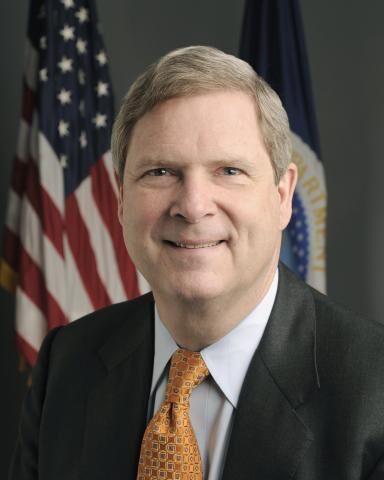U.S. Secretary of Agriculture Tom Vilsack reiterated his first priority as the head of the U.S. Department of Agriculture will be to help rural Americans recover from the COVID-19 pandemic, the subsequent economic fallout, and follow President Joe Biden’s plan to “build back better.”
Vilsack, who was sworn in as 32nd secretary of agriculture on Feb. 24, emphasized in his first call with reporters on Feb. 25 that programs in the USDA will focus on making sure that American farmers and ranchers have the tools they need to be successful on their farms.
“A recent Ag Research Service study on farm income said that on 89.6% of American farms today, farmers do not make the majority of their money from farming,” he said. “Tell me another occupation, another job or profession, where 90% of the people involved aren’t making the majority of their money from it. That’s an economic imperative that we look for additional ways to help those producing what we consume in this country and what we export. To help them make a living.
“That means doubling down on export markets, that’s creating new market opportunities and that’s where climate discussions come into play,” Vilsack said. “We need to provide support for local and regional food systems. And make sure that markets are fair and transparent and open. It’s a climate imperative, an environmental and market imperative and an economic imperative. We don’t have a day to waste on this.”
Already work has started on climate change legislation on Capitol Hill, and Vilsack said he wants farmers and ranchers to have a seat at the table.
“I believe American agriculture is poised to be a leader and take the first step to embrace climate smart practices and regenerative ag practices and focus on a variety of crop diversification strategies,” Vilsack said. Strategies like capturing methane on farms and converting it to energy, or taking agricultural waste and converting it to a variety of products as new revenue streams. And carbon credits are potentially one of those new revenue streams that may just be ready to be deployed.
In regard to using the Commodity Credit Corporation to financially back a carbon bank, Vilsack said simply that it’s the role of USDA to be as helpful as possible in providing research and technical assistance to standardize, measure, quantify, and verify any conservation practices or regenerative ag or climate smart practices that are embraced by the market to create carbon sequestration for an ecosystem market opportunity.
“We lose 4.5 tons of topsoil every single year, and we only replace that with about half a ton,” Vilsack said. That has a profound impact on our ability to raise food for our nation and the global food economy, he added.
“It’s necessary from a soil health perspective to do what we can as quickly as we can to help reverse those trends and restore the health of our soil,” he added. “I think farmers and ranchers understand better than anybody the importance of that.”
It’s his intention as the head of USDA to put efforts into creating and supporting pilot projects and research that will help farmers determine best practices for soil health that they can use on their farms. That research is something that ag lenders, and those in the carbon sequestration arenas are looking for as they invest in these new opportunities.
“I think there are opportunities for farmers and ranchers to create new farm income and new revenue streams than they’ve never had before and create jobs on the farms and ranches and in the manufacturing and processing,” Vilsack said. “During COVID, we learned a lot about our food system and the need for resiliency, in particular on our processing side, and that’s leading to another conversation about the competitive ness of the American farmer.”
Helping rural Americans recover from the COVID-19 pandemic is another priority. He promoted $42 million in grants to provide and expand access to distance learning and telemedicine, $24 million of which was from CARES Act funding.
“It’s fair to say the country’s priority and the president’s priority is containing the pandemic and building back our economy better,” Vilsack said. The pandemic hit rural America quite hard, he added, with infection rates in rural areas roughly 13 to 14% higher than in urban centers. The agency is helping in the COVID-19 vaccination effort across the country.
“We have 350 employees engaged in vaccination promotions,” Vilsack said. “We have veterinarians who are administering the vaccine in some states who have granted them the authority. We have service personnel who have experience in incident control working to help set up vaccination sites. We’ve offered up our USDA facilities to store vaccines because we have super cool refrigeration to use.”
These are big and aggressive priorities, but Vilsack said he has confidence in the staff at USDA to move these agenda items forward to quickly help Americans when and where they need it most.
Jennifer M. Latzke can be reached at 620-227-1807 or [email protected].




